Introduction To Rabbits: Why They Make Great Pets
If you’re looking for a furry and friendly companion, a rabbit might just be the pet for you! Not only are they adorable, but they also have unique personalities and can form strong bonds with their owners. In this blog post, we’ll be exploring the many reasons why rabbits make great pets, from their low-maintenance care to their sociable nature.
Firstly, rabbits are relatively easy to take care of compared to other pets. They require minimal grooming and can be litter-box trained, making them a great choice for apartment or small-space living. Additionally, rabbits are herbivores and can thrive on a diet of hay, fresh vegetables, and water.
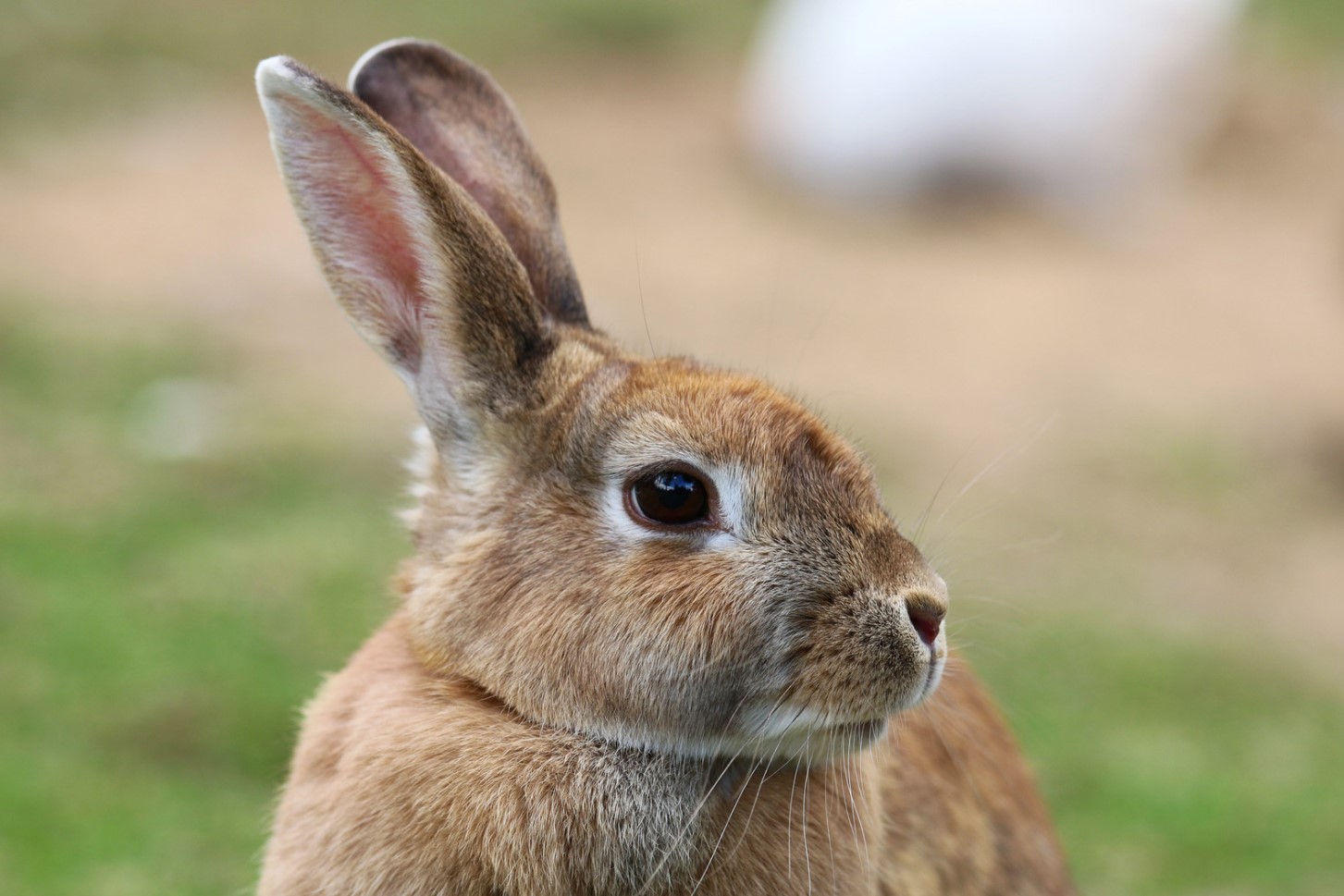
- They don’t need expensive toys or equipment like some other pets might
- Rabbits are quiet and won’t disturb your neighbors with barking or meowing
- They’re social creatures and enjoy spending time with their owners
Moreover, rabbits are known for being affectionate and playful with their owners. They enjoy being petted and cuddled, and can even learn tricks with training. With time and patience, rabbits can become just as loving and devoted as dogs or cats.
| Pros | Cons |
|---|---|
| Cute and cuddly companions | May require specialized veterinary care |
| Low-maintenance care | May chew on furniture or electrical wires |
Lastly, rabbits are intelligent and curious animals that can provide endless entertainment for their owners. They love to explore and play, and can be given toys and puzzles to keep them mentally stimulated. With proper care and attention, rabbits can live up to 10 years or more, making them a long-lasting and rewarding pet to have.
In conclusion, rabbits make wonderful pets for a variety of reasons, from their low-maintenance care to their social and playful personalities. If you’re considering adding a furry friend to your home, a rabbit might just be the perfect choice for you!
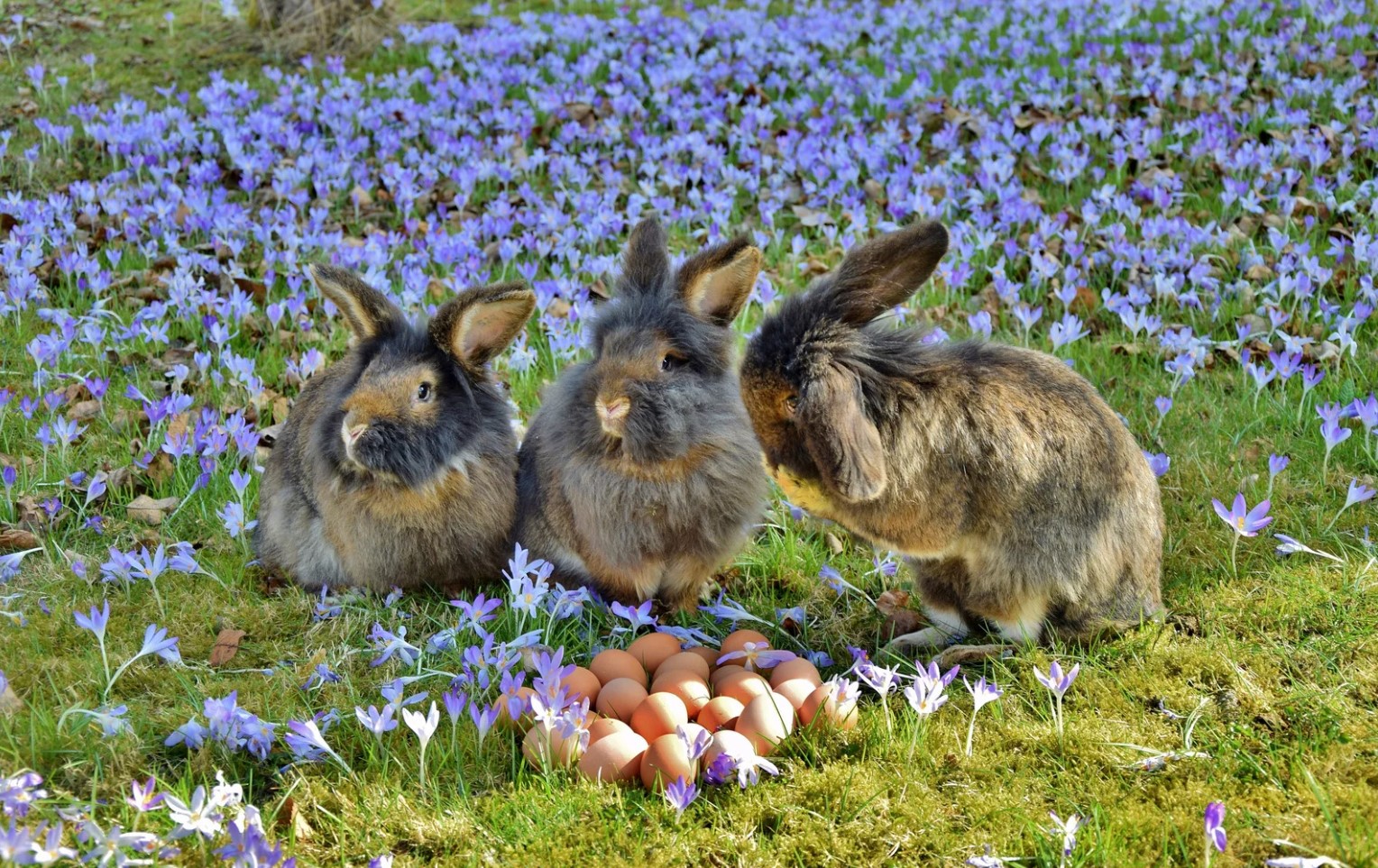
Learning About The Different Rabbit Breeds
If you’re looking to adopt a pet rabbit, it’s important to know that there are many different rabbit breeds out there. Each breed has unique characteristics and care requirements, so it’s important to choose a breed that fits your lifestyle and preferences. Here are some of the most popular rabbit breeds:
- Holland Lop: This breed is known for its floppy ears and gentle personality. They are small in size and make great indoor pets.
- New Zealand: This breed is often used as a commercial meat rabbit, but can also make a great pet. They have a calm temperament and are easy to handle.
- Mini Rex: These rabbits are known for their soft, velvety fur and playful personality. They are small in size and make great indoor pets.
It’s important to research each breed thoroughly before making a decision. Consider things like size, temperament, and grooming needs. Keep in mind that rabbits can live up to 10 years, so be prepared for a long-term commitment.
| Breed | Size | Temperament |
|---|---|---|
| Holland Lop | Small | Gentle |
| New Zealand | Medium to large | Calm |
| Mini Rex | Small | Playful |
When adopting a rabbit, make sure to provide a spacious enclosure with plenty of room to move around and exercise. Fresh hay, water, and vegetables should be provided daily. Regular veterinary check-ups are also important to ensure your rabbit stays healthy.
Overall, learning about the different rabbit breeds can help you make an informed decision when choosing a pet rabbit. With proper care and attention, rabbits can make wonderful companions.
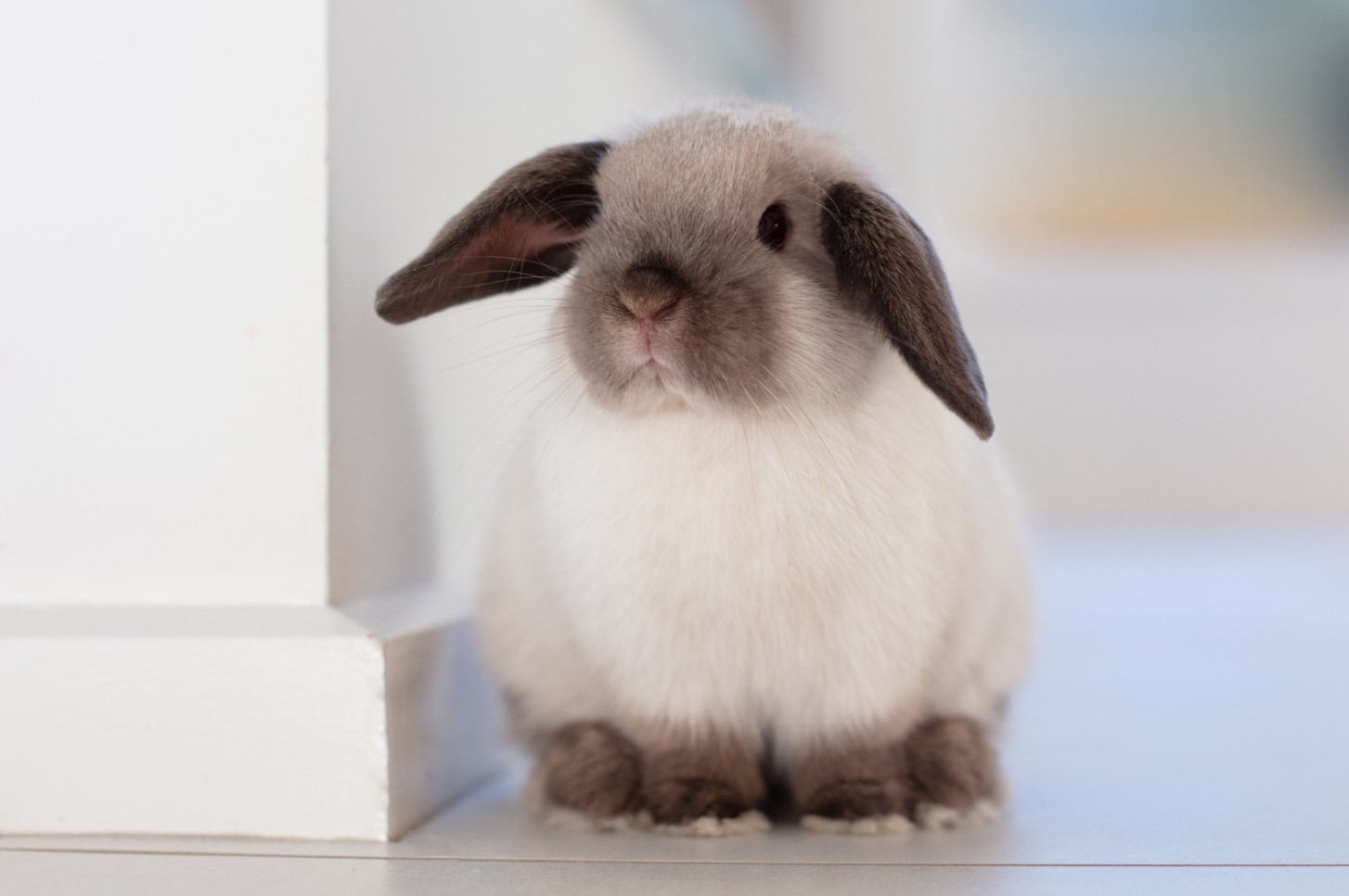
Understanding The History Of Rabbits: Where Did They Come From?
Rabbits have been revered as symbols of fertility, life, and abundance in cultures around the world for centuries. However, their history and origins are often misunderstood. Many people believe that rabbits are rodents, but they are actually lagomorphs, which are a distinct group of mammals. Lagomorphs are similar to rodents, but they have several unique characteristics such as two pairs of incisors and a digestive system that allows them to efficiently digest tough plant material.
The earliest fossil evidence of rabbits dates back to the Eocene period, around 50 million years ago. These ancient rabbits were significantly different from modern rabbits, and they were more similar in appearance to rodents. Over time, rabbits evolved to become more specialized and adapted to their environment. They developed longer legs for running and jumping, stronger teeth for chewing tough vegetation, and a unique digestive system that allows them to extract nutrients from their food more efficiently.
- The first domesticated rabbits were likely kept for their fur, meat, and as a source of fertilizer.
- In ancient Rome, rabbits were considered a luxury food and were often kept in warrens specifically for this purpose.
- During the Middle Ages, rabbits were bred in large numbers by monks for their meat and fur.
The history of rabbits is closely tied to human civilization, and they have been valued as a source of food, fur, and even artistic inspiration for thousands of years. Today, rabbits are popular pets, and they are commonly used in scientific research, particularly in the fields of genetics and physiology. Understanding the history and evolution of rabbits can provide important insights into the way that human beings have interacted with and learned from the natural world over time.
The Fascinating World Of Rabbit Colors
Rabbits are among the most adorable and fascinating creatures on earth. These furry herbivores come in a wide range of sizes, breeds, and colors – making them a popular choice for people who are interested in animal husbandry or just want a cute cuddly pet. But what makes rabbits stand out from other animals is their unique and vibrant coat colors.
Rabbit breeders and enthusiasts from all over the world have developed over 70 different color varieties of rabbits, each with its own unique pattern and shade. These colors range from solid black, white, or brown, to more exotic hues like silver, cream, and blue. Furthermore, they come in a wide range of patterns and colors such as agouti, broken, and black-tipped. The diversity of coloration in rabbits is what sets them apart from other domesticated animals, like dogs and cats.
- The Solid Colors: As the name suggests, these colors are consistent throughout the rabbit’s fur, and are usually the simplest of all rabbit color varieties. Some of the most popular solid colors of rabbits are black, white, red, blue, and chocolate.
- The Broken Colors: Broken rabbits are those which have a patchwork-like pattern on their fur. They have two or more colors in their coat, and neither color is dominant or complete. Broken rabbits are highly sought after by rabbit breeders because of their unique coat patterns.
- The Agouti Colors: Rabbits with agouti fur have multiple color bands on each individual hair shaft. This mixture of colors gives the rabbit a unique salt-and-pepper, or wild rabbit look. Some of the more popular agouti varieties are black, chocolate, and lilac.
Rabbit colors and patterns, whether solid, broken, or agouti, are an amazing example of nature’s infinite variations. However, these colors are not just for aesthetics – they are also indicative of certain breeds and can even signify particular genes. Understanding the different rabbit coat colors can provide insight into the history and genetics of the breed, and even help breeders to develop new colors and breeds. So, if you are a rabbit lover, don’t just settle for any old rabbit – choose the perfect color to match your personality, lifestyle, and sense of style!
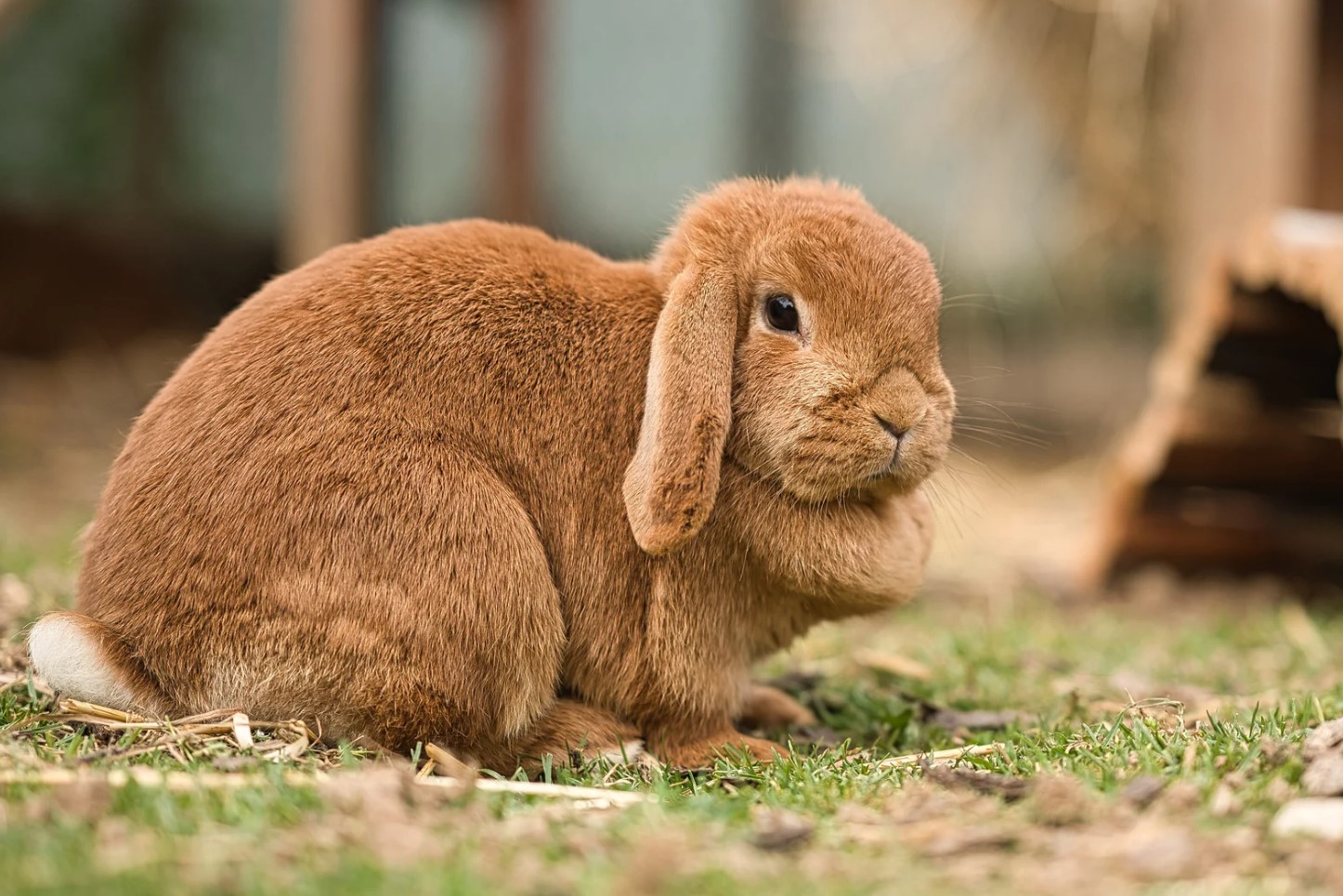
Wild Rabbit Vs Domestic Rabbit: What’s The Difference?
If you have ever been in a farm or countryside, you might have seen rabbits hopping around. But have you ever noticed any difference in their appearance or behavior? Because some of them might actually be wild rabbits, while others are domestic. Yes, there is a significant difference between the two types of rabbits. Although they might look similar, their distinctions are quite interesting.
Wild Rabbits:
- Wild rabbits are smaller in size than domestic rabbits.
- They have a lean and athletic body, adapted for their active lifestyle.
- Wild rabbits have a camouflaging coat that helps them to blend in and stay hidden from predators.
- They have long and strong legs, designed for running and jumping.
- Wild rabbits are generally in smaller groups and do not trust humans easily.
Domestic Rabbits:
- Domestic rabbits are larger in size and have a chubbier build.
- They are bred selectively to be more docile and less aggressive than wild rabbits, which makes them easier to keep as pets.
- Domestic rabbits have soft and fluffy fur, which makes them cuddlier and cuter than wild rabbits.
- They are generally kept in pairs or groups and are social animals.
- Domestic rabbits are used to human interaction and make great pets.
Differences in behavior:
| Wild Rabbits | Domestic Rabbits |
|---|---|
| Wild rabbits are usually active during dawn and dusk hours. | Domestic rabbits are more active at night. |
| Wild rabbits are very cautious and run away from predators quickly. | Domestic rabbits tend to be less cautious around humans and may approach them for food or attention. |
| Wild rabbits prefer open spaces and cover, such as bushes or trees. | Domestic rabbits like to stay indoors and might get scared when taken outside. |
In conclusion, Wild rabbits and domestic rabbits might look alike, but they have significant differences in their size, appearance, and behavior. Knowing these differences is essential when taking care of them, and understanding them is important when trying to maintain a healthy and happy relationship with your pet. So, whether you have a pet rabbit or just want to spot a wild one in nature, make sure you can tell them apart!
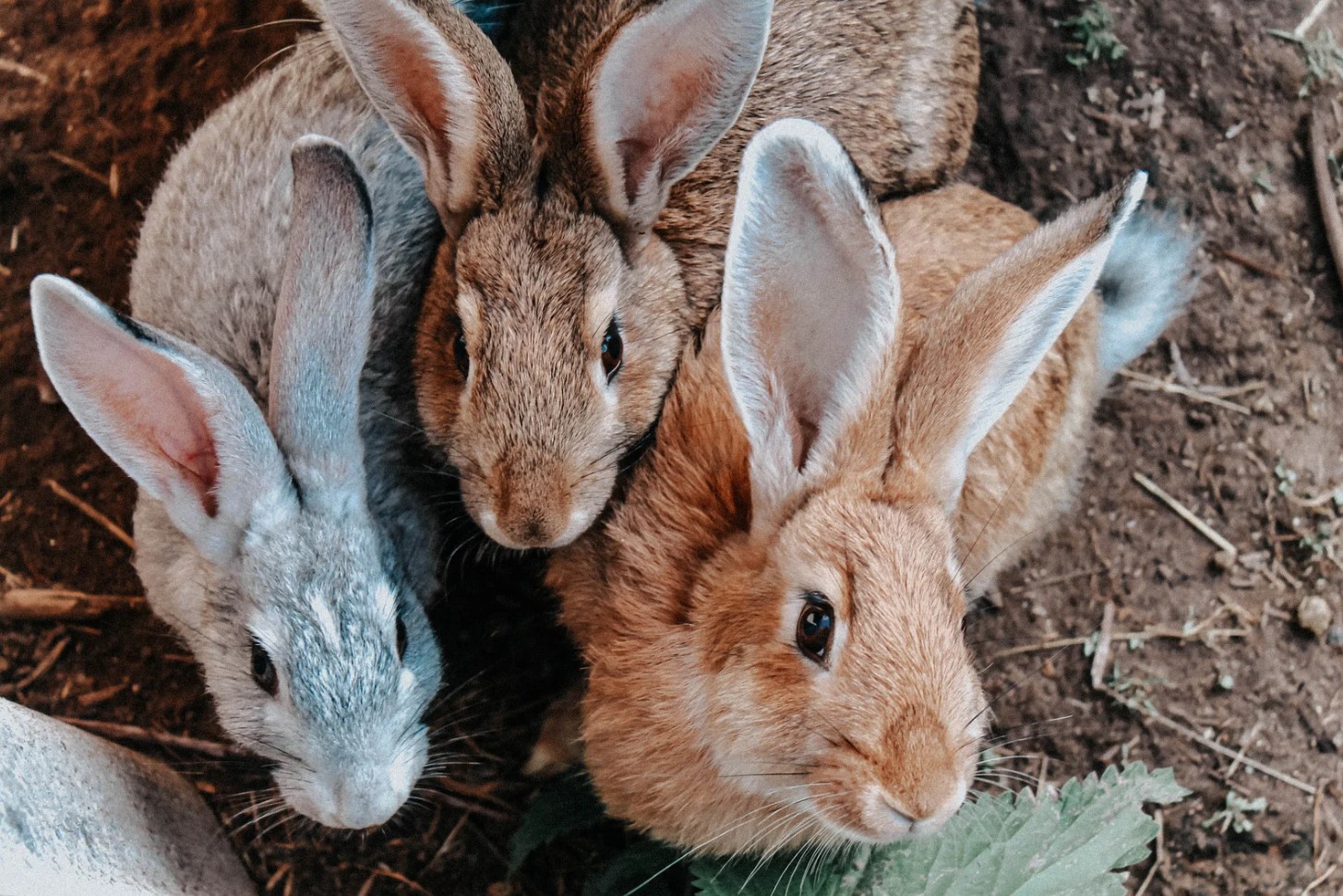
What To Know Before Bringing A Rabbit Home
Rabbits are delightful pets to have around the house, but as with any pet, getting one requires ample preparation to ensure their health and happiness. Just like with any other pet, acquiring a rabbit requires a significant amount of effort and consideration. As such, there are certain things that you need to know before bringing a rabbit home.
Housing
One of the most critical things to consider before bringing a rabbit home is adequate housing. Rabbits need ample space to move about and sift through hay, so ensure you have a big enough hut or shelter. However, don’t assume that the bigger the hutch, the better. Inadequately sized housing could make your bunny feel insecure or exposed.
- It is therefore vital to be mindful of space and ensure to provide additional shelter, such as a sheltered run or playpen, to offer your rabbit a more extensive range.
- Make sure to provide your rabbit with a comfortable and clean place with a wide range of temperature control to help prevent discomfort.
Feeding
Feeding is an important aspect of owning a rabbit. These pets require a specific kind of diet, so ensure you have done enough research to understand what to feed your bunny.
- Hay: Rabbits need around 80% of hay in their diet to have a healthy gut, healthy teeth and ensure that they have enough fiber.
- Vegetables and fruits: While rabbits indeed love munching on treats such as fruits and veggies, these foods shouldn’t make up more than 15% of their diet.
- Pellets: Pellets that are specially formulated for rabbits can make up the remaining 5% of their diet, but avoid overfeeding your rabbit with these pellets.
Environment
Finally, consider the environment in which you’re going to keep your rabbit. Rabbits are social animals and need to feel safe and secure around their human family. Make sure to take the time to bond with them and work in their relationship with the rest of the family. Also, be mindful of your rabbit’s environment and limit their exposure to potential hazards. Rabbits can easily chew on electrical wires, so it’s essential to ensure your house is bunny-proofed before letting your rabbit out to play.
| Key Points | Key Takeouts |
|---|---|
| Provide adequate housing and additional shelter to offer your rabbit more space and shelter. | Choose the right size of hutch and offer extra space such as a run. |
| Feed your rabbit a healthy diet that contains hay, veggies, and fruits, and avoid overfeeding pellets. | Understand the right diet for your bunny and avoid overfeeding pellets. |
| Consider the environment in which you’re going to keep your rabbit and ensure it is bunny-proof. | Bond with your bunny and provide a secure environment. |
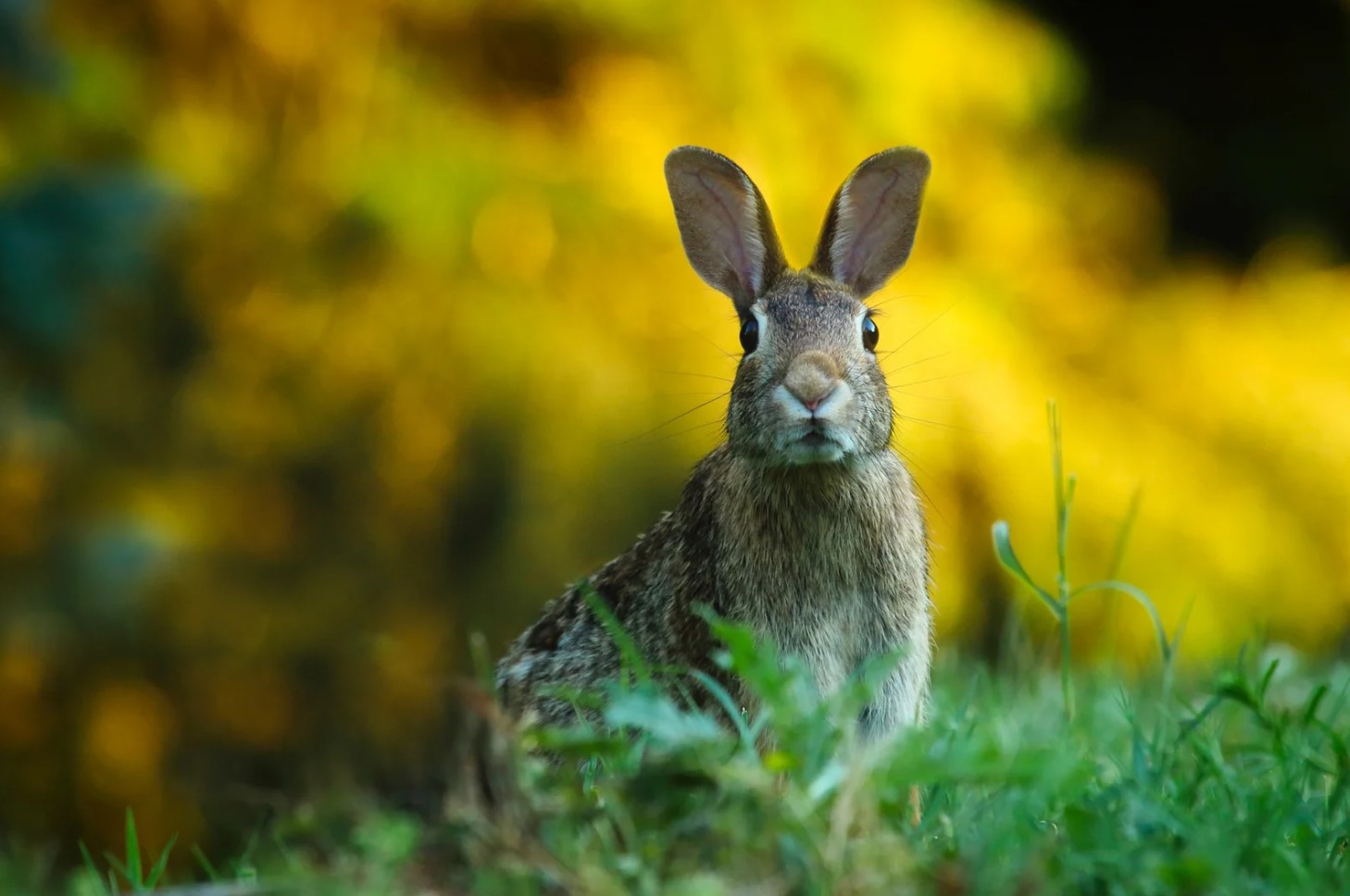
The Basics Of Rabbit Care: Feeding, Grooming And Housing
If you’re thinking about adopting a rabbit, it’s important to know the basics of their care. Rabbits may seem like low-maintenance pets, but in reality, they require a lot of attention and effort. One of the most crucial aspects of taking care of a rabbit is their diet. A rabbit’s diet should consist of hay, fresh vegetables, and a limited amount of pellets. Hay should be available 24/7, as it helps keep their digestive system healthy. Fresh vegetables should be offered daily, and they should make up about 75% of their diet.
- Housing is also an important aspect of rabbit care. Rabbits should be kept in a large, enclosed space that allows them plenty of room to move and play. The enclosure should be at least four times the size of the rabbit, and should include a hiding spot, a litter box, and water and food dishes.
- Grooming is another important aspect of keeping your rabbit healthy. Brushing your rabbit regularly helps to prevent hairballs and keep their coat healthy. It’s also recommended to trim your rabbit’s nails every few weeks.
- Finally, it’s important to pay attention to any changes in your rabbit’s behavior or health. Rabbits can be prone to dental problems, so if you notice your rabbit’s eating habits changing or if they seem to be having difficulty eating, it’s important to take them to the vet.
| Feeding | Grooming | Housing |
|---|---|---|
|
|
|
Overall, taking care of a rabbit requires dedication and attention to detail. By providing your rabbit with a healthy diet, a spacious enclosure, and regular grooming, you can ensure that they stay happy and healthy for years to come.
Health Concerns For Rabbits: Common Ailments And Diseases
Rabbits are beloved pets for many animal lovers. However, these adorable creatures are susceptible to various health conditions. As a responsible pet owner, it is important to recognize the signs and symptoms of common ailments and diseases in rabbits to prevent any serious health risks.
One of the most common health issues in rabbits is gastrointestinal upset. This is often caused by a poor diet or the ingestion of foreign objects. Symptoms of GI upset include decreased appetite, diarrhea, and lethargy. To prevent this, rabbits should have a balanced diet consisting of hay, vegetables, and a limited amount of pellets.
- Dental issues are another common cause of health concerns for rabbits. The teeth of rabbits continually grow, and if not worn down through chewing, can cause painful issues such as malocclusion, abscesses, or spurs. Rabbits with dental problems may dribble or have difficulty eating. Regular dental checkups can prevent this problem.
- Fur mites and other parasites can also cause problems for rabbits. Parasites can cause skin infections, fur loss, and irritation. Rabbits should receive regular veterinary checkups to check for any signs of parasites, and owners should ensure that their living area is kept clean to prevent infestations.
Urinary tract infections are also a possible health issue for rabbits. Symptoms of UTIs include reduced appetite, lethargy, and blood in the urine. Infections can be caused by a build-up of bacteria or urine crystals, and can be prevented through a balanced diet and adequate water intake. If you suspect your rabbit suffers from a UTI, take them to the vet immediately.
| Common Health Concerns for Rabbits: | Prevention Tips: |
|---|---|
| Gastrointestinal Upset | Feed your rabbit a balanced diet. |
| Dental Issues | Regular dental checkups. |
| Fur Mites and Parasites | Regularly clean living areas and provide regular veterinary checkups. |
| Urinary Tract Infections | Ensure adequate water intake and take your rabbit to the vet immediately if you suspect a UTI. |
To ensure your pet rabbit stays healthy, it is important to pay close attention to any unusual behavior or changes in their routine. If you suspect your rabbit may be suffering from a health condition, take them to a veterinarian with experience in treating rabbits. Preventative care can go a long way in helping rabbits live long, healthy lives.
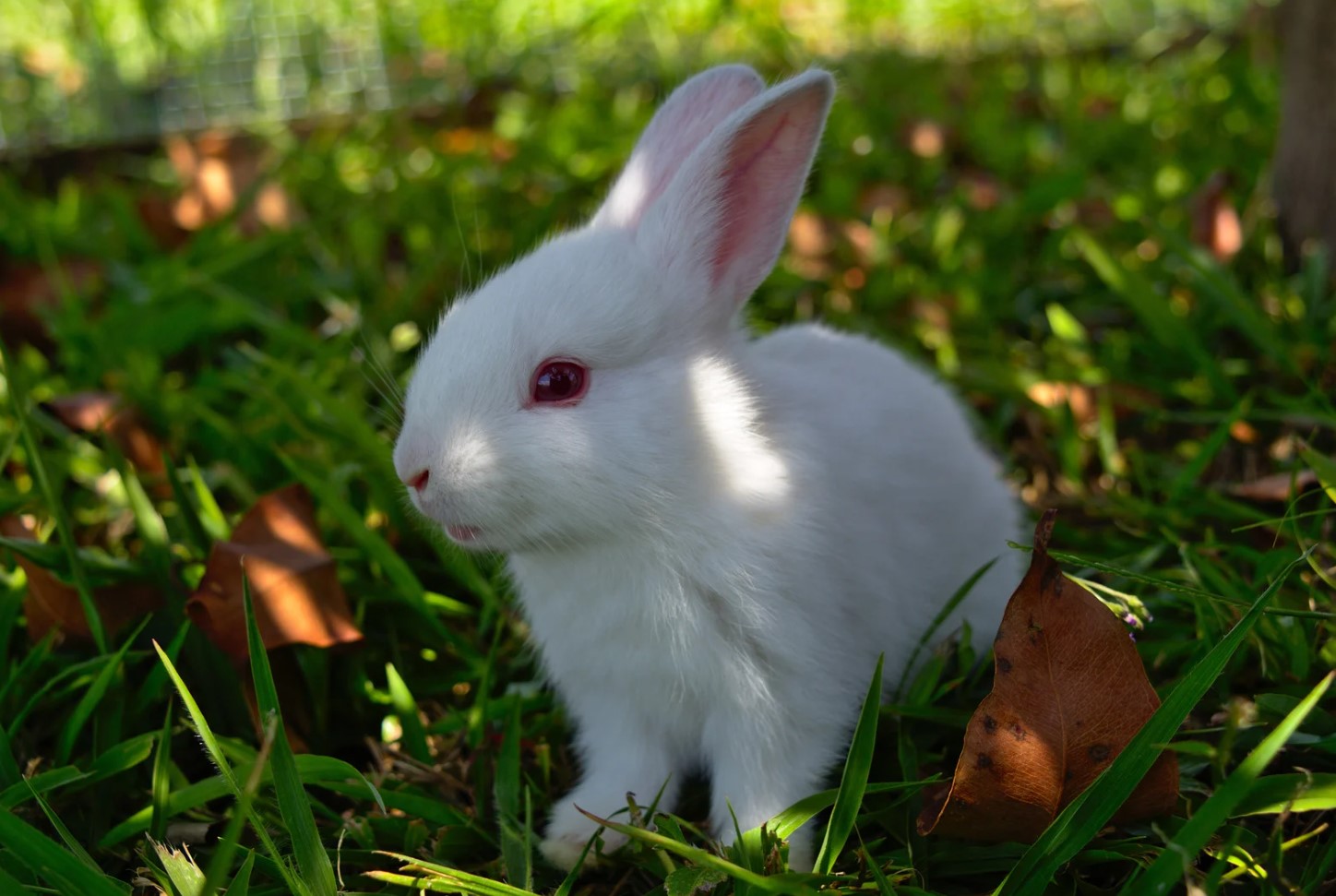
Fun Facts About Rabbits You May Not Know
There’s no denying that rabbits are some of the most adorable animals around. Not only are they cute, but they also happen to be fascinating creatures. Here are some fun facts about rabbits that you may not know.
Rabbits have excellent vision and hearing. Their eyes are placed high and on the side of their heads which allows them to have nearly 360 degrees of vision, which helps them evade predators. Their large ears are also able to pick up even the slightest sound, making them aware of potential dangers in the area. In fact, rabbits can even rotate their ears 180 degrees to hear better!
- Did you know that rabbits can communicate using body language? They have a variety of gestures and signals they use to convey different messages, such as when they’re scared, happy, or looking for a mate. For example, a happy rabbit may jump and twist in the air, while a scared rabbit may flatten its ears and lower its body to the ground.
- Rabbits have a special digestive system. They are considered “hindgut fermenters,” which means that they extract maximal nutrition from their diet by passing food through their digestive system twice. They also produce two types of droppings – hard, dry fecal pellets and softer, nutrient-rich cecotropes – which they eat to recycle the nutrients back into their body.
| Rabbits are social animals. | Rabbits have a unique breeding cycle. |
|---|---|
| Rabbits are social animals that live in groups, or warrens. They enjoy the company of others and will even groom each other as a form of social bonding. | Rabbits breed year-round, and a female rabbit can give birth to several litters in one year. Interestingly, the female rabbit is able to conceive again immediately after giving birth, which is why rabbits are able to reproduce so quickly. |
Rabbits are truly incredible animals. From their keen senses to their unique digestive systems and social behaviors, there’s no doubt they have a special place in the animal kingdom. It’s no wonder so many people have fallen in love with these adorable creatures!
The Joy Of Bonding With Your Rabbit
Are you a pet lover? Do you have a furry companion who holds a special place in your heart? If you happen to own a rabbit, you are in for a treat when it comes to bonding with them. Rabbits have a charm of their own. They are an adorable kind of pet, and it is easy to become attached to them.
Bonding with a rabbit is a delightful experience. It is a process that requires a lot of patience, care, and love. You will need to start off by treating your rabbit with gentleness and care, and this will show them that they can trust you. Talking to your rabbit in a soft and soothing voice can help to calm them down and make them feel secure. You can also spend quality time with your furry friend by playing with them, cuddling with them, or simply sitting by their side as they eat or explore their surroundings.
- Provide your rabbit with a safe and comfortable environment. Keep their living space clean and well-maintained.
- Give your rabbit enough space to run around and play. Providing them with some toys or a chew stick can keep them occupied.
- Rabbits are social animals, so allow them to interact with other rabbits or even other pets under supervision.
- Grooming your rabbit regularly by brushing their fur, cleaning their ears, and trimming their nails can create a closer bond between you and your furry friend.
When bonding with your rabbit, it is important to remember that these furry creatures have their own unique personality traits. Some rabbits may be more affectionate than others, while some may be more reserved. Be patient and observe your rabbit’s behaviour, and respect their individuality. Before you know it, your rabbit will be hopping over to you for cuddles and snuggles.
| Pros | Cons |
|---|---|
| Rabbits are low maintenance pets | Rabbits are delicate and require special care |
| Rabbits are social and love human company | Rabbits can be expensive to keep, especially vet bills |
| Rabbits are adorable pets and can become like family members | Rabbits can be messy and need to be litter trained |
In conclusion, bonding with your rabbit can be a joyful and fulfilling experience. By treating your furry friend with love, patience, and care, you can create a special bond that will last a lifetime. Whether you spend time playing with them, cuddling with them, or simply watching them explore their surroundings, your rabbit will appreciate your presence and companionship.
Training Your Rabbit: Tricks And Tips
Rabbits are beloved pets that provide joy and companionship to their owners. However, like any other animal, they need care and attention to thrive. One crucial aspect of caring for your rabbit is training them. Training can lead to a better-behaved bunny and provides mental stimulation for them. With patience and consistency, training your rabbit can be a fun and rewarding experience.
Firstly, it is essential to understand that positive reinforcement is the best way to train a rabbit. This involves rewarding good behavior rather than punishing bad behavior. Use treats such as small pieces of fruits, vegetables or their favourite snacks to motivate and reward them. Rabbits are intelligent and can learn tricks such as playing dead, hopping through hoops and jumping over obstacles.
- Secondly, for your rabbit to learn these tricks, you must get their attention. Use their name and say it excitedly, clapping your hands or making a “click” sound with your tongue.
- Thirdly, start teaching your rabbit with small achievable tasks. For instance, you can begin by targeting where you hold out your finger, and your rabbit touches it with their nose, and you reward them. This basic training will help you bond with your rabbit and build trust between you and your pet.
Finally, consistency and patience are key when training a rabbit. It would be best if you were regular with the training sessions, making them short, fun and engaging. As you progress, you can gradually teach your rabbit more advanced tricks. Remember that they have unique personalities, and not all rabbits will learn at the same pace.
| Training Your Rabbit: Tricks And Tips | ||
|---|---|---|
| Trick/Tips | Description | Reward |
| Targeting | This involves holding out your finger, and your rabbit touches it with their nose, and you reward them. | Small pieces of apple. |
| Playing dead | Teach your rabbit to flop down to the floor when you say “dead.” | Small pieces of banana. |
| Hopping through hoops | Place a hoop on the ground, and train your rabbit to jump through it. | Extra attention and belly rub. |
In conclusion, training your rabbit can be a fun and rewarding experience. Remember to use positive reinforcement, start with small tasks, be consistent and patient, and most importantly, have fun with your furry companion. Happy training!
Understanding Rabbit Behavior: What Does Your Rabbit Mean?
Rabbits are one of the most commonly kept pets in the world. They are adorable, fluffy and very playful. However, understanding the behavior of your rabbit can be difficult at times. Here are some things you need to know to interpret what your rabbit is trying to communicate with you:
- Ears: Rabbits use their ears to show their emotions. When their ears are standing up, it means they are happy and curious. If their ears lay sideways, they might be scared or uncomfortable. If their ears are flat against their back, it means your rabbit is very scared or angry.
- Body language: Rabbits use their body language to show their mood. When they are excited, they will run around and jump in the air. When they are calm, they will lay down and relax. If they are stomping their feet or growling, it’s a sign they are angry.
- Noises: Rabbits make various sounds to communicate with their owners. They might growl to show their displeasure or grunt when they are annoyed. When they make a purring sound, it means they are happy and content. If they are making a high pitched scream, it means they are in danger or frightened.
It’s important to understand what your rabbit is trying to communicate to you, in order to establish a strong bond with them. If you can identify the mood of your rabbit, you can respond to it accordingly. Some rabbits might need more care and attention than others, so it’s important to pay close attention to your rabbit’s behavior. Remember that each rabbit communicates in their own way, so understanding their behavior might take some time. However, with a little patience and understanding, you can build a meaningful relationship with your furry little friend.
| Behavior | Meaning |
|---|---|
| Standing Ears | Curious/Happy |
| Laying EarsSideways | Scared/Uncomfortable |
| Flat Ears | Angry/Frightened |
| Running and jumping | Excited |
| Laying down and relaxing | Content/Calm |
| Stomping feet and growling | Angry/Displeased |
| Purring | Happy/Relaxed |
| High pitched scream | Frightened/Danger |
Socializing Your Rabbit: How To Keep Them Happy
Socializing Your Rabbit: How To Keep Them Happy
Rabbits are social creatures and they thrive on companionship. Keeping your pet rabbit happy is important to maintain its physical and emotional health. Here are some tips to help you socialize your rabbit:
- Get a Same-Sex Companion – If you have a single rabbit, consider getting another same-sex companion. They love to play and cuddle with each other, and it will keep them from feeling lonely.
- Allow Them to Play – Rabbits love to play. Give them toys and structured activities to keep them happy and stimulated. You can create a space for them to run and explore, or take them for walks outdoors, always using a leash.
- Give Them Attention – Rabbits crave attention from their human companions as well. Set aside time each day to gently pet and talk to your rabbit.
| Do | Don’t |
|---|---|
| Provide your rabbit with a spacious and comfortable living area. | Forget to clean the living area regularly. A dirty environment can cause stress and illness. |
| Give your rabbit a diet of hay, vegetables, and fruits to maintain a healthy weight and avoid digestive issues. | Overfeed your rabbit with sugary foods or junk foods. It may cause obesity or dental problems. |
| Handle your rabbit gently and respectfully, holding it firmly but carefully and avoiding sudden movements. | Force your rabbit to do or endure things they don’t want to. Always give them the choice to avoid activities they don’t like. |
It’s important to remember that not all rabbits are the same, and some may need more or less socialization depending on their personalities and past experiences. Always observe your rabbit closely and adjust your approach accordingly. With patience, consistency, and love, you can build a strong bond with your furry friend and keep them happy and healthy.
Rabbits And Children: A Great Bonding Experience
Rabbits can make great pets for children. They are playful, cute, fluffy and fun. However, before you decide to bring a rabbit into your home, it’s important to understand their basic needs and behaviors. Rabbits are social animals and they thrive when they are given attention and love.
- Firstly, rabbits need plenty of space to move around. They should have a cage or hutch that’s big enough for them to stretch out in and hop around in. It should also be secure, to keep them safe from predators and to prevent them from escaping.
- Secondly, rabbits need a balanced and healthy diet. They should have access to fresh hay, vegetables, and specially formulated rabbit food. It’s important to avoid feeding them sweets, chocolate or any human food as it can be harmful to their health.
- Thirdly, rabbits need plenty of exercise and playtime. They love to run, jump and explore. You can let them out of their cage or hutch for some supervised playtime in a rabbit-proofed space in your home or in a secure outdoor area.
When introducing a rabbit to children, it’s important that they are gentle and respectful of the rabbit’s needs. Children should be supervised when handling the rabbit to make sure they don’t accidentally hurt them or cause them stress.
| Do’s | Don’ts |
|---|---|
| Do: Pick the rabbit up carefully, supporting their back legs and making sure they feel secure. | Don’t: Pull the rabbit’s ears or tail, squeeze them or be rough with them. |
| Do: Speak in a soft and calm voice, offering the rabbit gentle reassurance. | Don’t: Shout, chase or frighten the rabbit. |
| Do: Spend time cuddling and grooming the rabbit, letting them get used to human contact in a positive way. | Don’t: Ignore the rabbit or leave them alone for long periods of time. |
Overall, rabbits can be a wonderful addition to a family with children, but they require care and attention just like any other pet. With the right environment, diet and handling, rabbits and children can form a strong bond and create many happy memories together.
The Economics Of Rabbit Breeding: Can İt Be Done?
Are you considering starting your own rabbit breeding business? It’s important to understand the economics of rabbit breeding to determine if it’s a viable option for you. While rabbits are often used for meat and fur production, there are a few factors that need to be considered before diving into the business.
Firstly, it’s important to calculate the costs of rabbit breeding. This includes the initial investment for cages, feed, water equipment, and any necessary vaccinations. Ongoing expenses include the cost of rabbit food, breeding supplies, and veterinary care.
- In terms of food, rabbits primarily eat hay, pellets, and fresh vegetables. The cost can vary depending on your location and the type of feed you choose.
- When it comes to breeding supplies, it’s important to have items such as nesting boxes and a breeding area. These items can add to the cost of setting up the business.
- Furthermore, it’s important to have a good relationship with a vet, as unexpected medical costs can arise.
Secondly, the demand for rabbit meat and fur needs to be considered. Research the market demand in your area and determine if there is a potential for profit. You can sell your rabbits to local butcher shops, restaurants, or even directly to consumers.
| Breed | Weight | Price per lbs |
|---|---|---|
| New Zealand White | 9-12 lbs | $8-$12 |
| Californian | 8-11 lbs | $9-$13 |
| Rex | 7-8 lbs | $11-$15 |
Lastly, it’s important to consider the time and effort required for rabbit breeding. Breeding rabbits can be time-consuming and require daily care and attention. Additionally, you’ll need to have knowledge on breeding techniques, caring for newborn rabbits, and managing breeding schedules.
In conclusion, while rabbit breeding can be a profitable venture, it’s important to carefully consider the economics of it before diving in. Calculate the costs, research the market demand, and understand the time and effort required. By doing so, you will be able to determine if rabbit breeding is a viable business option for you.